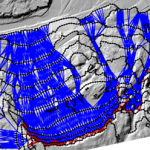In a world where static images used to be the norm, technology has taken a giant leap forward. Now, photos don’t just sit quietly on your screen—they talk, move, and express emotions like real humans. This fascinating innovation is called Talking Photo technology, and it’s transforming how we communicate, create content, and preserve memories.
Whether you’re a content creator, marketer, educator, or just someone who loves creative tools, this technology offers endless possibilities. In this article, we’ll explore what talking photos are, how they work, real-life uses, and how you can create them easily using tools like an AI Talking Photo Generator.
What Is a Talking Photo?
A talking photo is a static image—such as a portrait or selfie—that is brought to life using artificial intelligence. The AI animates facial features like lips, eyes, and head movements to make it appear as if the person in the photo is talking.
Instead of hiring actors or recording videos, you can take a simple picture and turn it into a realistic video with synchronized speech or audio.
How It Works
Talking photo technology uses a combination of:
- Facial Recognition to map key facial points like the eyes, mouth, and head.
- Deep Learning Models to predict movements based on the audio provided.
- Lip Syncing to match mouth movements with spoken words accurately.
- Rendering to combine all elements into a seamless video.
Tools like the AI Talking Photo Generator allow users to upload a photo, add audio or text, and generate a lifelike talking avatar within seconds.
Why Talking Photos Are Trending
1. Engaging Content for Social Media
Short, animated clips of talking photos often go viral because they’re unusual, entertaining, and emotional. From historical figures “speaking” to family portraits coming alive, audiences love this creative format.
2. Cost and Time Efficiency
Instead of recording professional videos, you can create high-quality animated photo videos with minimal resources. No cameras, actors, or studios needed.
3. Accessibility and Ease of Use
Even beginners can make talking photos with simple drag-and-drop interfaces. Platforms like Free AI Lip Sync Generator make the process accessible to everyone at no cost.
4. Emotional Storytelling
Imagine bringing a picture of your grandparents to life or making your favorite character speak. It adds a deep emotional touch to memories and storytelling.
Popular Uses of Talking Photo Technology
1. Digital Marketing & Branding
Businesses use animated spokespersons to deliver personalized messages, product explanations, and customer greetings. It strengthens connection and adds a human touch to digital communication.
2. Education and E-Learning
Teachers and content creators can use talking photos to explain concepts in an engaging way. For example, a historical figure like Albert Einstein or Cleopatra can “speak” and narrate their story.
3. Entertainment & Social Media Trends
Creators on TikTok, Instagram, and YouTube use talking photos to make funny clips, memes, and storytelling videos that stand out.
4. Preserving Memories
Families use this technology to make old photographs “speak,” offering a nostalgic and emotionally powerful experience.
5. Customer Support and Virtual Assistants
Brands embed talking avatars in websites or apps to guide users, explain features, or answer basic questions.
How to Create a Talking Photo Step-by-Step
Ready to create your own talking image? Here’s a simple guide:
Step 1: Choose a Clear Photo
Select a photo with a clear, front-facing view. The face should be well-lit and not blurred.
Step 2: Use a Reliable Tool
Visit a platform like the AI Talking Photo Generator to get started.
Step 3: Add Voice or Text
You can:
- Upload a pre-recorded voice clip.
- Type text and let AI convert it into speech.
- Use your own voice recording.
Step 4: Let AI Do the Magic
The AI will automatically map facial movements and sync them with the audio.
Step 5: Download and Share
Once processed, download the video and share it across platforms like TikTok, Instagram, or your website.
Tips for Better Talking Photo Results
- Use High-Resolution Images: The clearer the photo, the more natural the animation will look.
- Keep the Face Unobstructed: Avoid photos where hair, hands, or accessories block the face.
- Match Voice and Emotion: Use expressive audio that fits the character’s face and personality.
- Test Different Voices: Experiment using various accents, tones, or AI voice styles for creative results.
- Use Tools like the Free AI Lip Sync Generator to experiment without spending money upfront.
Real-World Examples You’ll Love
- Museums and History Projects: Historical figures like Abraham Lincoln or Frida Kahlo are brought to life to educate students in a fun way.
- Social Media Memes: Viral trends where pets or baby photos “talk” using humorous voice-overs.
- Business Promotions: Brands use animated CEOs or mascots to announce offers or interact with customers.
- Tributes and Memorials: People use old loved ones’ photos and add heartfelt voice messages to remember them.
Are Talking Photos Ethical?
While the technology is exciting, it also raises ethical concerns. Always keep in mind:
- Get Permission: Use photos of others only with consent.
- Avoid Misinformation: Never use talking photos to impersonate real people for misleading purposes.
- Be Respectful: Especially when animating images of deceased individuals.
Future of Talking Photo Technology
With rapid improvements in AI and deepfake detection, talking photos will become even more realistic. Soon, we might see:
- Interactive talking portraits in museums.
- AI-powered virtual influencers.
- Real-time speaking avatars for customer service.
As creativity meets technology, the possibilities are endless.
Conclusion
Talking photo technology is more than just a fun social media trend—it’s a powerful tool reshaping how we create content, educate, market, and preserve memories. With platforms like the AI Talking Photo Generator and Free AI Lip Sync Generator, anyone can bring a photo to life within minutes.
Whether you’re creating a meme, a digital spokesperson, or a heartfelt memory, this innovation opens a world where images don’t just tell stories—they speak them.

